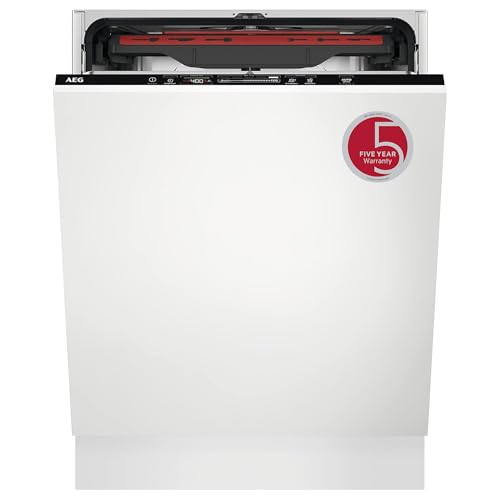




Has your washing machine’s drawer been filling with water during cycles? This can be a frustrating and messy problem to deal with. However, understanding the causes and finding the right solutions can help you resolve the issue and keep your laundry routine on track.
One common cause for the washing machine drawer filling with water is a clogged or blocked detergent dispenser. Over time, detergent residue, lint, and other debris can accumulate and obstruct the flow of water. This can prevent the dispenser from properly draining, leading to water build-up. Cleaning the detergent dispenser and removing any blockages can often solve this problem.
Another possible cause is a faulty water inlet valve. The water inlet valve controls the flow of water into the washing machine. If it is not functioning correctly, it can result in the drawer filling with water. Replacing the faulty valve with a new one can help resolve this issue.
Additionally, a kinked or damaged drain hose can also contribute to the problem. If the drain hose is not properly connected or is bent, it can hinder the proper drainage of water from the drawer. Ensuring that the drain hose is in good condition and free of obstructions can help prevent water from accumulating.
Note: It is important to always refer to the manufacturer’s instructions and consult a professional if you are unsure about making any repairs or adjustments to your washing machine. Safety should always be the top priority.
By identifying the cause and implementing the appropriate solution, you can address the issue of your washing machine’s drawer filling with water. Regular maintenance, such as cleaning the detergent dispenser and checking the drain hose, can also help prevent this problem from recurring in the future. Remember, a well-functioning washing machine is essential for efficient and hassle-free laundry tasks.
Common Causes of Washing Machine Drawer Filling with Water
- 1. Blocked Detergent Dispenser: One of the most common causes of a washing machine drawer filling with water is a blocked detergent dispenser. Over time, detergent residue and fabric softener can accumulate and clog the dispenser, preventing the water from draining properly.
- 2. Incorrect Detergent Usage: Using too much detergent or using the wrong type of detergent can also cause the washing machine drawer to fill with water. Excessive detergent can create excessive suds, which can lead to overflow and water filling the drawer.
- 3. Clogged Drain Hose: A clogged drain hose can restrict the flow of water from the washing machine, causing it to back up and fill the drawer. This can happen if the drain hose is kinked or if there is a buildup of lint or debris blocking the hose.
- 4. Faulty Water Inlet Valve: If the water inlet valve is not functioning properly, it may not shut off completely, causing water to continue flowing into the washing machine drawer. This can happen due to a faulty valve or a problem with the water pressure.
- 5. Water Pressure Issues: Low water pressure or fluctuating water pressure can also contribute to the washing machine drawer filling with water. If the water pressure is too low, the water may not drain properly, leading to overflow.
- 6. Faulty Water Level Sensor: The water level sensor in the washing machine is responsible for detecting the water level and signaling the machine to stop filling. If the sensor is malfunctioning, it may not detect the correct water level, resulting in the drawer filling with water.
Clogged Drainage System
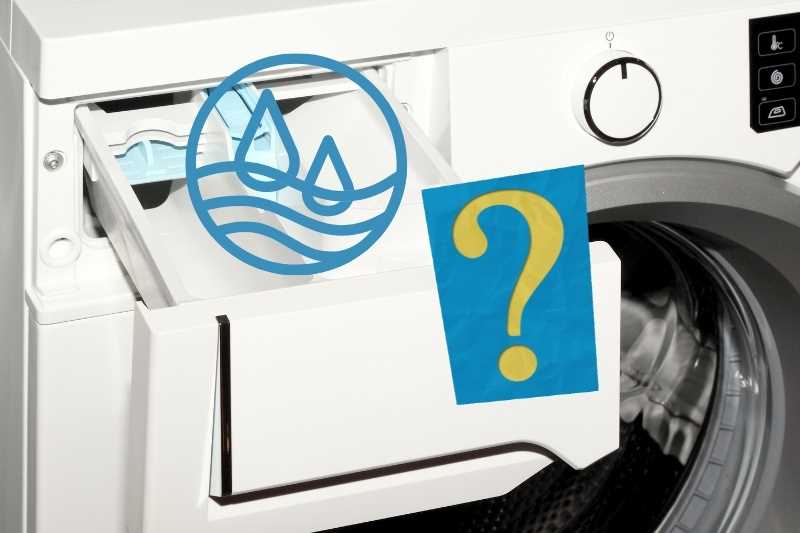
A clogged drainage system is one of the top causes of the washing machine drawer filling with water. When the drainage system is clogged, water cannot flow properly and ends up overflowing into the drawer.
Symptoms of a clogged drainage system:
- Water filling up the washing machine drawer
- Water not draining properly from the machine
- Slow or no drainage at all
Causes of a clogged drainage system:
- Lint and debris: Over time, lint, hair, and other small particles can build up and clog the drainage system. This can be particularly common in households with multiple residents or where there is excessive shedding of hair or lint-producing fabrics.
- Foreign objects: Sometimes, small objects such as coins, buttons, or jewelry can inadvertently find their way into the washing machine. These objects can get stuck in the drainage system, leading to clogs.
- Detergent residue: Excessive use of detergent or using the wrong type of detergent can cause a build-up of residue in the drainage system. This residue can harden over time and contribute to clogs.
Solutions for a clogged drainage system:
- Cleaning the filter: Most washing machines have a removable filter that is located near the drainage pump. Regularly cleaning this filter can help prevent clogs caused by lint and debris. Follow the manufacturer’s instructions on how to remove and clean the filter.
- Checking for foreign objects: Inspect the drainage system for any foreign objects that may be causing clogs. If any objects are found, carefully remove them to restore proper drainage.
- Using the correct detergent: Ensure that you are using the appropriate type and amount of detergent for your washing machine. Using a detergent specifically designed for high-efficiency machines can help minimize residue build-up.
- Regular maintenance: Performing regular maintenance on your washing machine, such as running a cleaning cycle with vinegar or specialized cleaning products, can help keep the drainage system clear and prevent clogs.
If the drainage system continues to be clogged despite these solutions, it may be necessary to contact a professional plumber or appliance repair technician to diagnose and fix the issue.
Faulty Water Inlet Valve
If your washing machine drawer is filling with water, one of the possible causes may be a faulty water inlet valve. The water inlet valve is responsible for controlling the flow of water into the machine during the wash cycle. If it is not working properly, water may leak into the drawer instead of filling the drum.
There are a few signs that can indicate a faulty water inlet valve. First, check if there is water constantly flowing into the drawer even when the machine is not in use. Additionally, if the water pressure is weak or if the machine takes longer than usual to fill with water, it may be a sign that the valve is not functioning correctly.
To solve this issue, the water inlet valve may need to be replaced. Before attempting to replace the valve, it is recommended to disconnect the power supply and turn off the water supply to the machine. This will ensure your safety and prevent any further damage to the appliance.
To replace the water inlet valve, you will need to:
- Remove the top panel of the washing machine by unscrewing the screws at the back.
- Locate the faulty water inlet valve, which is usually located near the back of the machine.
- Disconnect the wires and hoses connected to the valve.
- Remove the faulty valve by unscrewing the mounting screws.
- Install the new water inlet valve by screwing it into place.
- Reconnect the wires and hoses to the new valve.
- Replace the top panel of the washing machine.
If you are not experienced in appliance repair, it is recommended to consult a professional technician to replace the water inlet valve for you. They will have the necessary knowledge and tools to perform the task safely and efficiently.
Remember to always refer to the manufacturer’s instructions and guidelines when performing any repairs on your washing machine.
Overfilled Detergent Dispenser
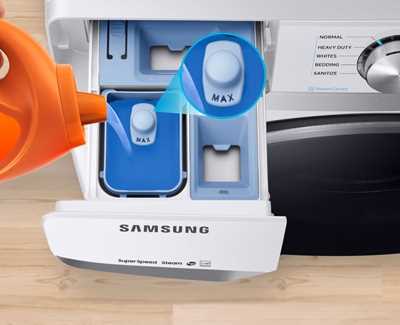
One of the common causes of a washing machine drawer filling with water is an overfilled detergent dispenser. When the detergent dispenser is filled with too much detergent, it can cause overflow and water leakage into the drawer.
To determine if an overfilled detergent dispenser is causing the issue, follow these steps:
- Inspect the detergent dispenser: Check if the dispenser is filled above the marked lines. If it is, remove the excess detergent.
- Use the recommended amount of detergent: Refer to the washing machine’s manual for the recommended amount of detergent to use for each cycle. Using more detergent than necessary can lead to excessive suds and overflow.
- Check water hardness: If you live in an area with hard water, you may need to adjust the amount of detergent you use. Adding more detergent than necessary can cause detergent buildup and overflow in the dispenser.
- Clean the detergent dispenser: Regularly clean the detergent dispenser to remove any residue or buildup that could clog the dispenser and cause overflow.
If the issue persists even after following these steps, it may be necessary to contact a professional technician to inspect the washing machine for any underlying issues that could be causing the overfilled detergent dispenser.
Potential Solutions for Washing Machine Drawer Filling with Water

1. Clean the drawer
One of the most common causes of a washing machine drawer filling with water is a clogged or dirty drawer. Remove the drawer from the washing machine and inspect it for any blockages or build-up. Use a mixture of warm water and mild detergent to clean the drawer thoroughly, ensuring that all compartments and nozzles are clear.
2. Check the water inlet
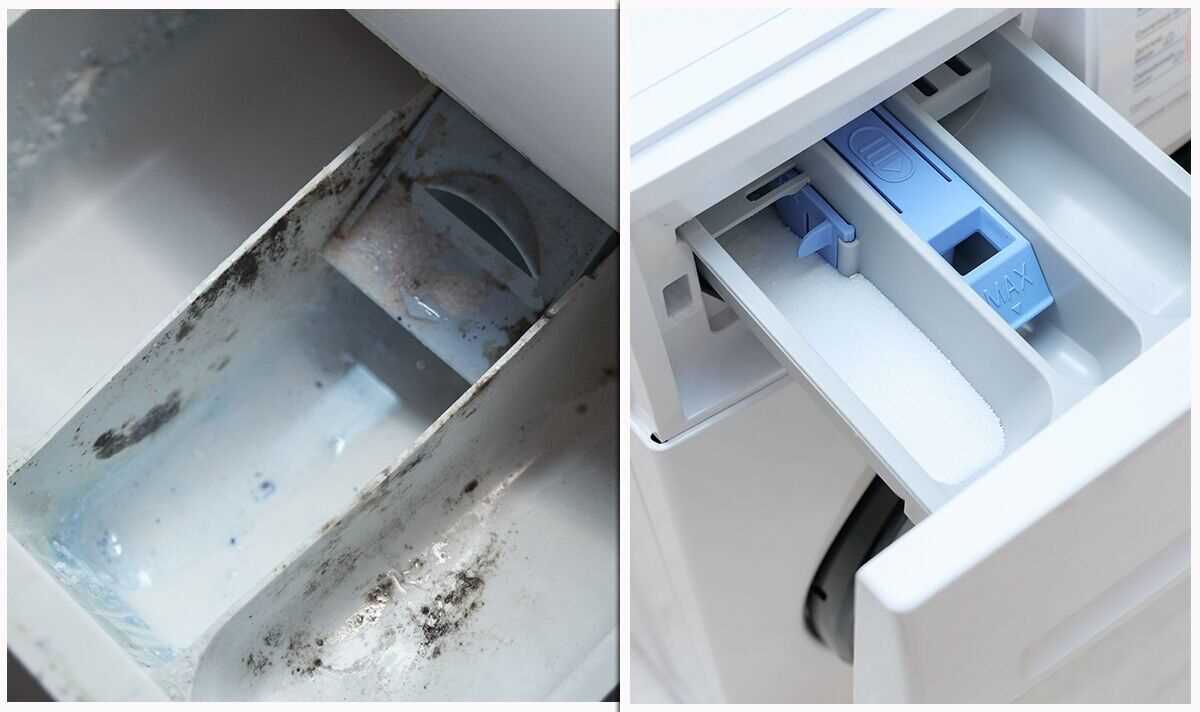
Another possible cause of water filling the drawer is a problem with the water inlet. Check the inlet hose for any kinks or blockages, and ensure that it is securely connected to the water supply. If the hose is damaged or worn, consider replacing it. Additionally, inspect the inlet valve for any signs of damage or malfunction and replace it if necessary.
3. Adjust the water pressure
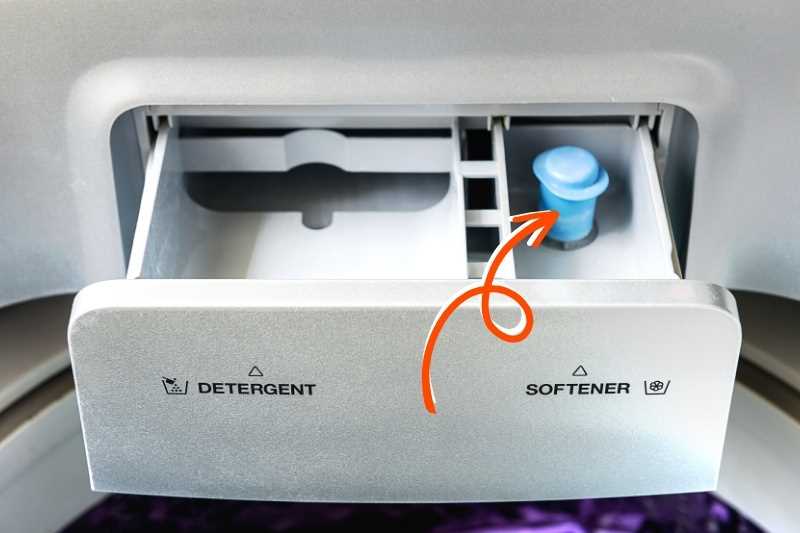
High water pressure can also cause the drawer to fill with water. Check the water pressure in your home and if it is too high, consider installing a pressure reducing valve. This will help regulate the water pressure and prevent it from overwhelming the drawer.
4. Examine the drainage system
If the washing machine is not draining properly, it can lead to water flowing back into the drawer. Check the drainage hose for any clogs or blockages and remove them if necessary. Additionally, ensure that the drainage hose is positioned correctly and that it is not inserted too far into the drain pipe.
5. Call a professional
If none of the above solutions solve the issue, it may be necessary to call a professional washing machine repair technician. They will have the expertise and tools to diagnose and fix the specific problem causing the drawer to fill with water. Avoid attempting any complex repairs yourself, as this could potentially cause further damage to the appliance.
Finding the cause of a washing machine drawer filling with water can be frustrating, but by following these potential solutions, you can hopefully resolve the issue and prevent it from happening again in the future.
Clean and Unclog the Drainage System
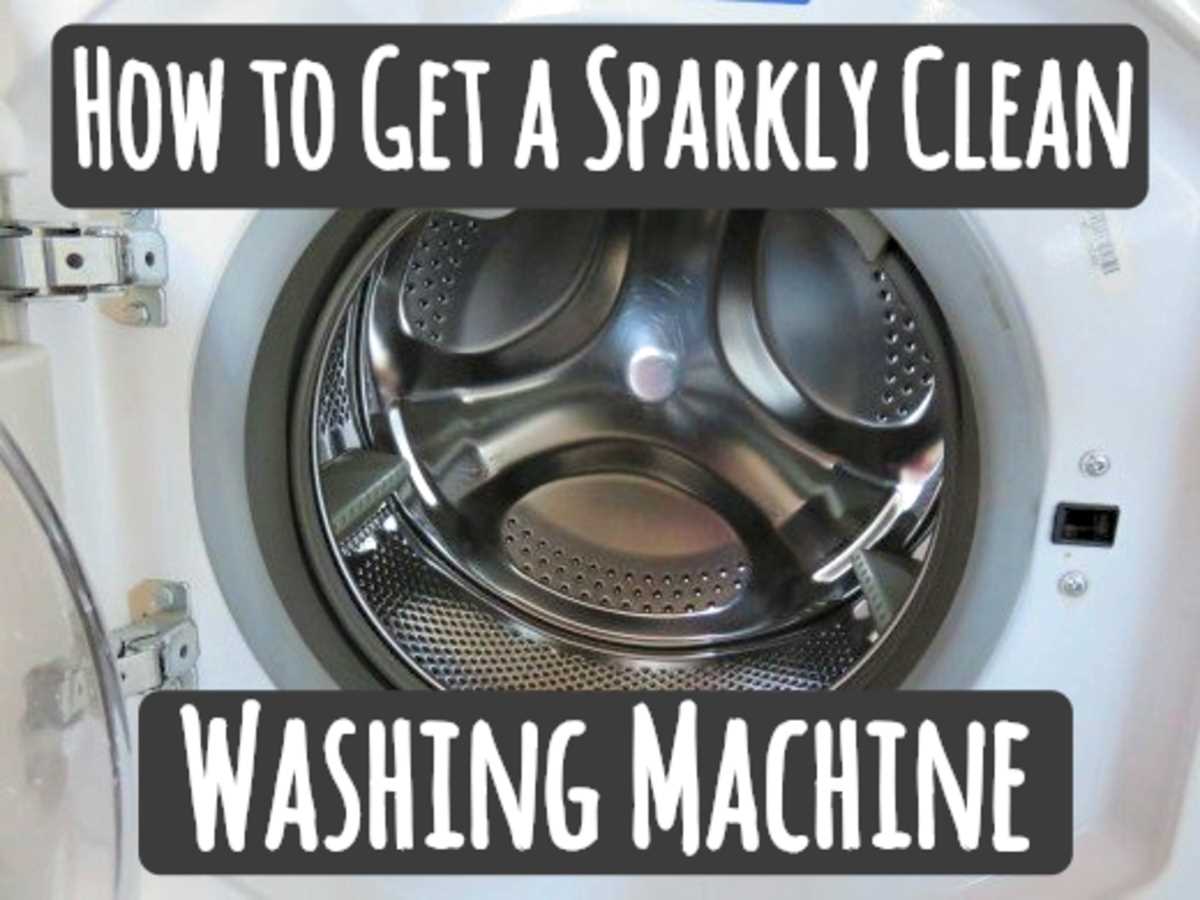
One of the main causes of a washing machine drawer filling with water is a clogged or dirty drainage system. Over time, dirt, lint, and other debris can accumulate in the drainage system, leading to blockages and restrictions in water flow. Cleaning and unclogging the drainage system can help resolve this issue and prevent water from filling up in the drawer.
Steps to clean and unclog the drainage system:
- Start by unplugging the washing machine from the power source to ensure safety.
- Locate the drainage pipe or hose behind the washing machine. It is usually connected to a drainage outlet or a standpipe.
- Place a bucket or basin beneath the drainage pipe to catch any water that may spill out during the cleaning process.
- If the drainage pipe is connected with a clamp, use a screwdriver to loosen the clamp and detach the pipe carefully. If it is connected directly to a standpipe, you can skip this step.
- Once the drainage pipe is detached, check for any visible clogs or blockages. Use a flashlight to look inside and remove any debris using a wire hanger, plumbing snake, or a long brush.
- If the blockage is not visible or easily accessible, you may need to use a drain cleaning solution. Follow the manufacturer’s instructions on the product carefully and pour the recommended amount into the drainage pipe. Let it sit for the specified time.
- After the designated time, flush the drainage system with hot water to help dislodge and remove any remaining debris or residue.
- Reattach the drainage pipe to the washing machine or standpipe, making sure it is securely connected. Tighten any clamps if necessary.
- Plug the washing machine back into the power source.
- Test the machine by running a small wash cycle without any clothes to see if the water fills up in the drawer. If the problem persists, you may need to seek professional assistance or consider other causes.
Cleaning and unclogging the drainage system regularly can help prevent water from filling up in the washing machine drawer and ensure the proper functioning of your machine. It is recommended to perform this maintenance task every few months or as needed.
Replace the Faulty Water Inlet Valve
If your washing machine drawer is filling with water, one of the possible causes could be a faulty water inlet valve. The water inlet valve is responsible for controlling the flow of water into the machine. If it is not functioning properly, it can cause water to overflow into the drawer.
To replace the faulty water inlet valve, you will need to follow these steps:
- Unplug the washing machine from the power source.
- Shut off the water supply to the machine by turning the valves located on the water supply lines clockwise.
- Disconnect the water supply hoses from the back of the machine.
- Locate the water inlet valve, which is usually located at the back of the machine and is connected to the water supply hoses.
- Remove the screws or bolts that are securing the water inlet valve in place.
- Disconnect the electrical connections from the water inlet valve.
- Take out the faulty water inlet valve from the machine.
- Install the new water inlet valve by following the above steps in reverse order.
- Once the new valve is installed, reconnect the water supply hoses and turn the water supply back on.
- Plug the washing machine back into the power source.
After replacing the faulty water inlet valve, test the machine to ensure that the drawer is no longer filling with water. If the issue persists, you may need to consult a professional repair technician for further assistance.
FAQ
Why is my washing machine drawer filling with water?
There can be several reasons why your washing machine drawer is filling with water. One possible cause is a blockage in the drainage system, which prevents the water from draining properly. Another reason could be a faulty water inlet valve, which allows water to enter the drawer even when it shouldn’t. Additionally, a malfunctioning water pressure switch or a problem with the detergent dispenser can also lead to the drawer filling with water.
What should I do if my washing machine drawer is filling with water?
If your washing machine drawer is filling with water, there are a few steps you can take to troubleshoot the issue. First, check for any visible blockages in the drainage system and remove them if present. Next, inspect the water inlet valve for any signs of damage or malfunction, and consider replacing it if necessary. You should also check the water pressure switch and the detergent dispenser for any faults. If the problem persists, it is recommended to contact a professional technician for further assistance.
Can I fix my washing machine drawer filling with water on my own?
While some causes of a washing machine drawer filling with water can be resolved by the user, it is advisable to seek professional help in most cases. Fixing a blockage in the drainage system or cleaning the detergent dispenser are tasks that can typically be performed by the user. However, if the issue is due to a faulty water inlet valve or a malfunctioning water pressure switch, it is best to leave the repair to a trained technician to avoid causing further damage.
How much does it cost to repair a washing machine drawer that is filling with water?
The cost of repairing a washing machine drawer that is filling with water can vary depending on the cause of the issue and the location. In general, the cost can range from £50 to £200. Simple fixes such as removing a blockage or cleaning the detergent dispenser may be less expensive, while replacing a faulty water inlet valve or a water pressure switch can be more costly. It is recommended to contact a local appliance repair service for a more accurate estimate.
What are some preventive measures to avoid a washing machine drawer filling with water?
To prevent your washing machine drawer from filling with water, there are a few preventive measures you can take. Regularly clean the drainage system and remove any lint or debris that may accumulate. Avoid overloading the machine with detergent, as excess detergent can cause clogs and overflow. Additionally, inspect and maintain the water inlet valve to ensure it is functioning properly. It is also a good practice to have your washing machine serviced regularly by a professional to detect and address any potential issues before they worsen.


